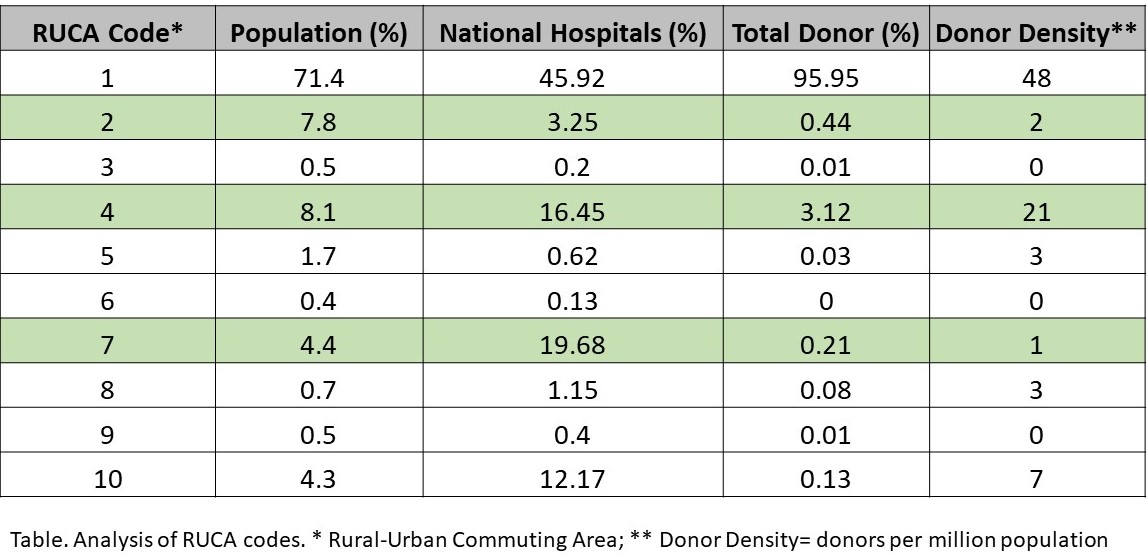Capitalizing On Donor Density To Increase Organ Pool – An Analysis Of Urban And Rural Organ Donors
Baylor College of Medicine, Houston, TX
Meeting: 2019 American Transplant Congress
Abstract number: 351
Keywords: Donation
Session Information
Session Name: Concurrent Session: Non-Organ Specific: Public Policy & Allocation
Session Type: Concurrent Session
Date: Monday, June 3, 2019
Session Time: 4:30pm-6:00pm
 Presentation Time: 4:30pm-4:42pm
Presentation Time: 4:30pm-4:42pm
Location: Room 311
*Purpose: The primary factor limiting access to organ transplantation is the limited supply of deceased donor allografts. While there are multiple potential strategies to increase access to transplantation, maximizing the number of donors and, therefore, increasing the donor organ pool remains a priority. The aim of this study was to analyze the donor density based on donor and hospital zip codes.
*Methods: We analyzed deceased donor and donor hospital data from the United Network for Organ Sharing database. Zip codes were assigned Rural-Urban Commuting Area (RUCA) codes based on data from the WWAMI Rural Health Research Center. These RUCA codes, ranging from 1 (metropolitan area core) to 10 (rural area), allowed for a Census based classification of donor and donor hospital zip codes. Donor density was calculated as donors per million population.
*Results: Data showed that 71.4% of the population, 45.9% of hospitals, and 96% of donors were within RUCA 1 (metropolitan area core). The donor density for RUCA 1 was 48 donors per million population. A break down of all RUCA codes is shown in the table below. Of interest, RUCA 2 (30% commute to an urbanized area) made up 7.8% of the population, had 3.3% of hospitals, but made up 0.4% of donors with a donor density of 2. RUCA 4 (primary flow within a large urban cluster) made up 8.1% of the population, had 16.5% of hospitals, but made up 3.1% of donors with a donor density of 21. Lastly, RUCA 7 (primary flow within a small urban cluster) made up 4.4% of the population, had 19.7% of hospitals, but made up 0.2% of donors with a donor density of 1.
*Conclusions: The bulk of the population, a large percentage of national hospitals, and most deceased organ donors are in metropolitan core areas. However, a significant percentage of hospitals are located within commuting distance of certain smaller rural-urban areas, and efforts should be made to increase the donor density in these areas.
To cite this abstract in AMA style:
Bakhtiyar S, Ahmed S, Goss JA, Rana A. Capitalizing On Donor Density To Increase Organ Pool – An Analysis Of Urban And Rural Organ Donors [abstract]. Am J Transplant. 2019; 19 (suppl 3). https://atcmeetingabstracts.com/abstract/capitalizing-on-donor-density-to-increase-organ-pool-an-analysis-of-urban-and-rural-organ-donors/. Accessed December 24, 2025.« Back to 2019 American Transplant Congress

